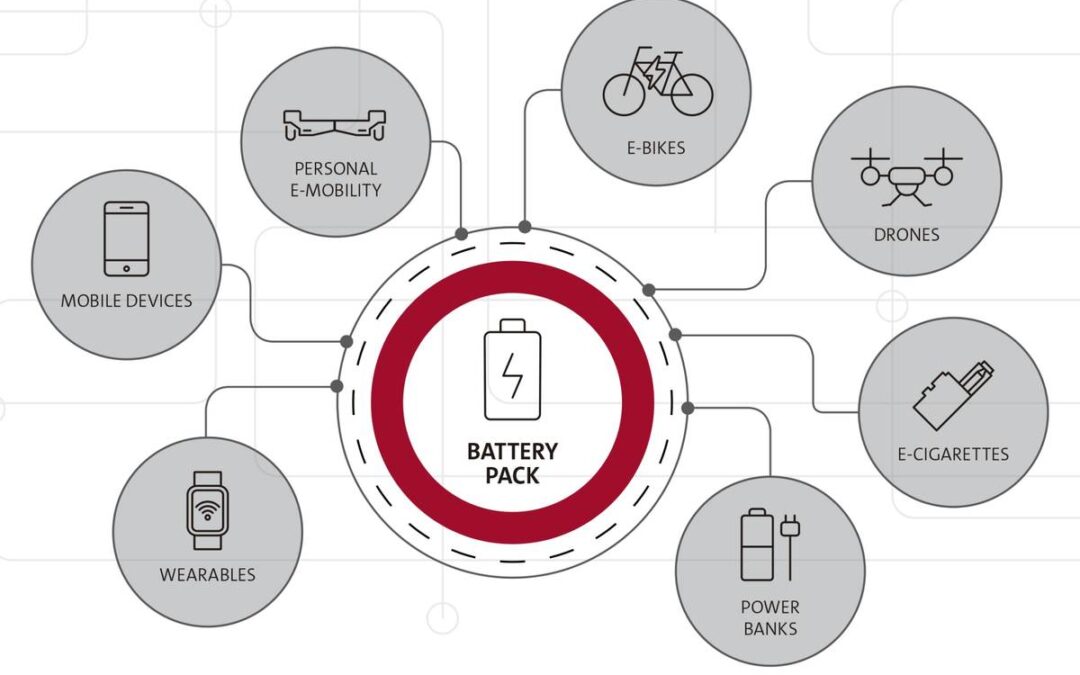In our increasingly digital and interconnected world, lithium-ion batteries have become an indispensable component of our daily lives. From smartphones and laptops to electric bikes/vehicles and renewable energy storage systems, these batteries power the devices that keep us connected, informed, and entertained. However, as Spider-Man once said, “with great power comes great responsibility.” The same lithium-ion batteries that make our modern world possible also pose certain fire safety risks. In this blog post, we’ll explore the critical aspects of fire safety in relation to lithium-ion batteries and offer valuable tips on how to minimize the risks associated with them.
Understanding Lithium-Ion Batteries
Before delving into fire safety, let’s briefly understand how lithium-ion batteries work. These rechargeable batteries contain lithium ions, which move between the negative (anode) and positive (cathode) electrodes through an electrolyte, generating electrical energy. This mechanism provides a high energy density, making lithium-ion batteries attractive for a wide range of applications.

Fire Hazards Associated with Lithium-Ion Batteries
Lithium-ion batteries are generally safe when used and maintained properly. However, several factors can contribute to the risk of fire or thermal runaway, which can result in fires or explosions. Some of the key fire hazards associated with lithium-ion batteries include:
- Physical Damage: Physical damage to the battery, such as punctures, cracks, or deformation, can compromise the integrity of the cell, potentially leading to thermal runaway.
- Overcharging and Overheating: Overcharging a lithium-ion battery can cause it to overheat, leading to thermal runaway. This can happen if you use an incompatible charger or if the battery management system fails.
- Exposure to Extreme Temperatures: High temperatures can increase the risk of thermal runaway. Leaving lithium-ion batteries in hot environments, like a car on a hot summer day, can be dangerous.
- Manufacturing Defects: Poorly manufactured batteries may have internal defects or impurities that can increase the likelihood of thermal runaway.
Fire Safety Tips for Lithium-Ion Batteries
To ensure the safe use of lithium-ion batteries, follow these fire safety tips:
- Choose Quality Products: Purchase lithium-ion batteries and chargers from reputable manufacturers and authorized retailers. Be cautious of counterfeit products, which may not meet safety standards.
- Use the Right Charger: Always use the charger provided by the manufacturer or a compatible charger specifically designed for your device. Avoid third-party chargers of unknown quality.
- Avoid Overcharging: Unplug your devices when they are fully charged. Many modern devices have overcharge protection, but it’s still wise to disconnect them from the charger when they reach 100%.
- Store Batteries Safely: Store spare batteries in a cool, dry place, away from direct sunlight and extreme temperatures. Consider storing them in a fireproof bag or container.
- Inspect for Damage: Regularly inspect your batteries for physical damage. If you notice any signs of swelling, punctures, or leakage, stop using the battery and dispose of it properly.
- Handle with Care: Be cautious when handling lithium-ion batteries, especially when installing or removing them from devices. Avoid dropping or crushing them.
- Dispose of Old Batteries Properly: When it’s time to replace your lithium-ion batteries, dispose of them at designated recycling facilities or drop-off locations, as they can be hazardous waste.

Conclusion
These thoughts are just the tip of the iceberg that is Power Storage safety. This didn’t cover outdoor electric charging stations, building power storage, and a host of other large-scale applications in the manufacturing sector. Fire Safety and Power Storage is a cutting edge topic and will be the talk of our upcoming Fire Facts Seminar in January 2024. We will be holding two events to discuss, inform, and train Fire Inspectors, Officials, and Safety personnel on what the experts are saying about this developing technology and the best practices to keep lives and property safe.
Lithium-ion batteries are an integral part of our modern lives, but their safety must not be overlooked. By understanding the potential fire hazards associated with these batteries and following safety guidelines, we can minimize the risks and enjoy the convenience and benefits they offer. It’s crucial to stay informed and vigilant when it comes to handling and maintaining lithium-ion batteries, ensuring our safety in a high-tech world.
Dan has been around the fire equipment industry almost his whole life. His father, Robert, was the owner of Kamp Fire Equipment in Paterson, NJ and a founder of NJ Fire Equipment in Rockaway, NJ. He learned to use a computer by entering paper invoices into an electronic spreadsheet. Now Dan leads the Marketing efforts for Encore Fire Protection in their East Hanover, NJ location.

